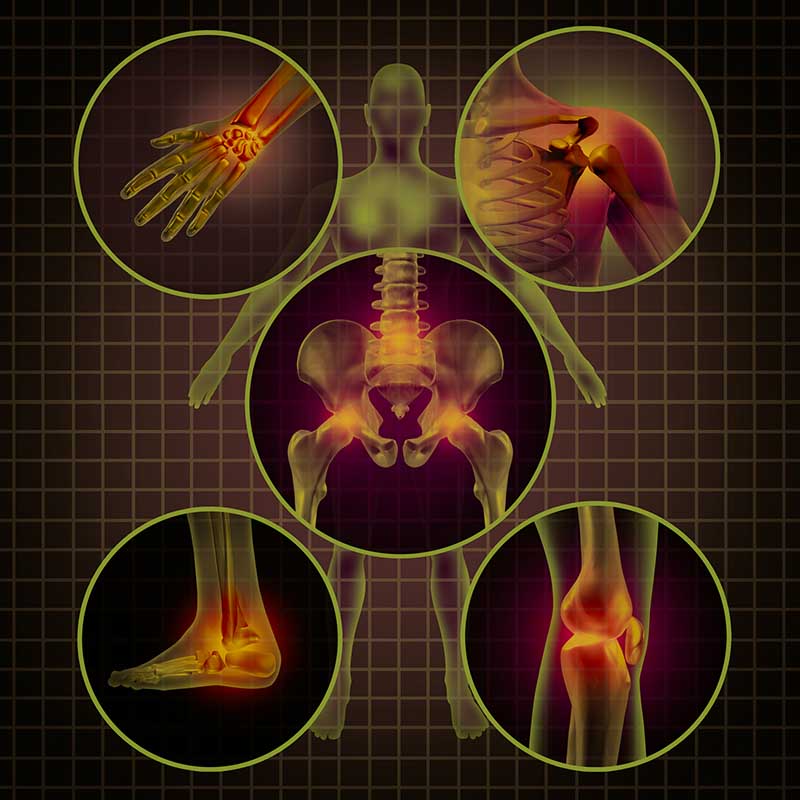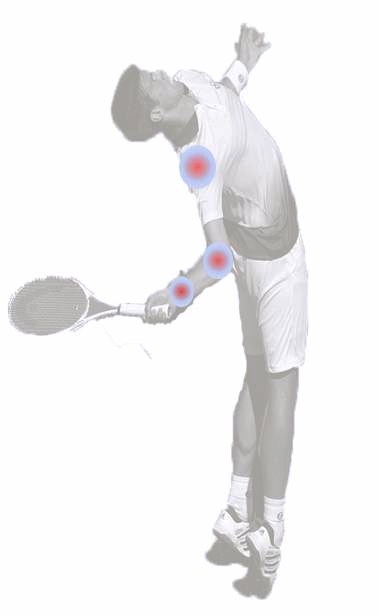Injury prevention in tennis serve and forehand
%
Expert players with shoulder injuries
%
Expert players with elbow injuries
%
Expert players with wrist injuries
%
Expert players with back or abdominal injuries

Biomechanical errors : warning !
Although the serve and forehand are weapons in tennis, they can injure the players if badly executed. These are potentially traumatic shots, as they place very high loadings on the player’s joints. Poor serve or forehand technique can overload the joints.
Excessive joint loadings and energy loss
When serving, an inefficient or poor technique can result in a loss of energy that is not transferred from one segment to the next, causing the player to compensate and overload the most distal joints. Excessive joint loadings, coupled with a high number of repetitions, can lead to injury. There are a number of technical errors to be avoided: insufficient leg drive, hyperangulation of the shoulder, waiter’s serve, early rotation of the hips, etc.
OPEN STANCE vs. NEUTRAL STANCE FOREHAND
Open stance forehands in extreme defensive situations put more loadings on the knee and hip joints than neutral or open stance in attacking forehands. Long-term repetition of this type of stroke can lead overuse hip and knee injuries.

Results
Main results

Tennis players subjected to the highest joint loadings are those most at risk of injury.

In forehand, defensive open stance are more demanding on the racket-side hip and knee than attacking strokes with neutral or open stance.

Some players with shoulder injuries leave their arm dragging behind the shoulder axis for too long during the cocking phase of the serve. This is known as shoulder hyperangulation.

Players who do not have an optimal energy transfer between body segments when serving are more prone to injury.
Studies
Publications
Identification of pathomechanical factors during the tennis serve
C. Martin, R. Kulpa, M. Ropars, P. Delamarche, B. Bideau. « Identification of pathomechanical factors during the tennis serve », Medicine and Science in Sports and Exercise, 2013;45(11):2113-9.
Upper limb joint kinetic analysis during the tennis serve: assessment of competitive level on efficiency and injury risks
C. Martin, B. Bideau, M. Ropars, P. Delamarche, R. Kulpa. « Upper limb joint kinetic analysis during the tennis serve: assessment of competitive level on efficiency and injury risks », Scandinavian Journal of Medicine & Science in Sports. 2013 Jan 7. doi: 10.1111/sms.12043.
Tennis serve biomechanics in relation to upper limb joint injuries and ball velocity
C. Martin. « Tennis serve biomechanics in relation to upper limb joint injuries and ball velocity », Journal of Medicine and Science in Tennis, 2014;19(2):35-39.
Energy flow during the tennis serve:
C. Martin, B. Bideau, N. Bideau, G. Nicolas, P. Delamarche, R. Kulpa. « Energy flow during the tennis serve: comparison between injured and non-injured tennis players », American Journal of Sports Medicine, 2014;42(11):2751-60.
